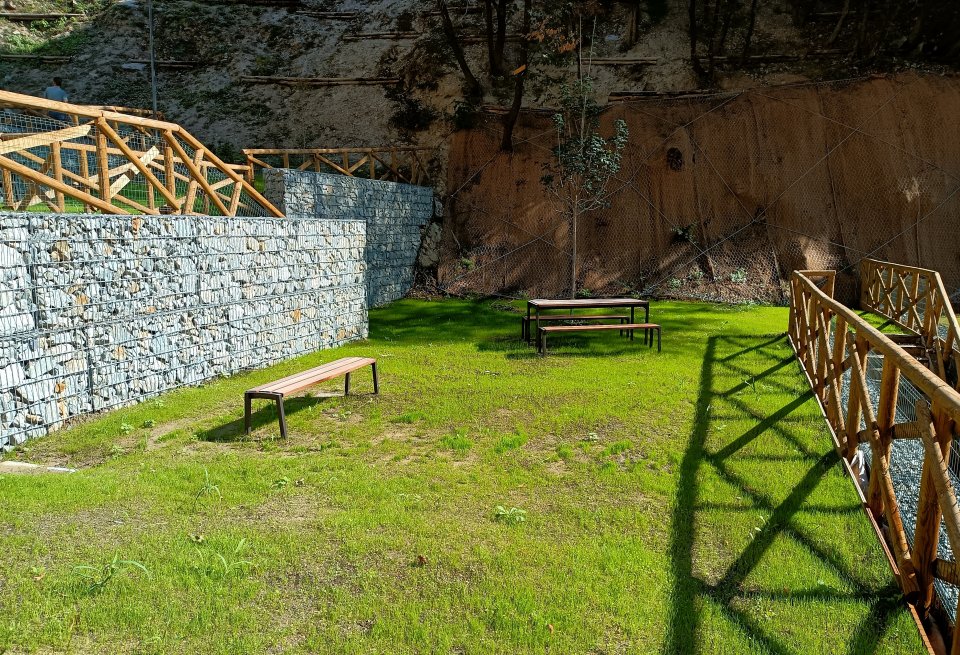
The Municipality of Genova has transformed the Gavoglio area in the Lagaccio district into a 10000 m2 urban park. The former military barracks in the area have been demolished and the area has developed into a public, inclusive and sustainable urban park built by almost entirely nature-based solutions. All functions of the park have been designed to be compatible with nature and the project involved the implementation of 12 different nature-based solutions.
The city of Genoa experiences acute densification and lack of public green spaces, making urban heat stress a pronounced challenge. Air pollution and biodiversity loss are among the other challenges Genova targeted to address through NbS implementation.
A large amount of green areas complemented by tall trees and shrubs have been implemented in the Gavoglio park to help regulate the local microclimate and increase the amount of permeable soil that can reduce runoff. The choice of vegetation must follow criteria relating to climate resilience, functional compatibility, allergenic and toxic properties, high aesthetic and ecological value, favouring native species and ease of maintenance. Cinnamomum camphora, Jacaranda mimosifolia, Schinus molle, Cercis siliquastrum are ornamental trees used in these specific areas. A mix of Ballota pseudodictamnus, Cistus x purpureo, Lavandula x intermedia ‘Grosso', Myrtus communis, Teucrium fruticans and Santolina is used as herbaceous.
The concentration levels of NO2 and O3 at the reference site in Via Napoli was significantly (1.5 to 3 times) greater than the one recorded in Gavoglio during the current data acquisition period, with a peak in autumn-winter time. Trees groups and green areas demonstrated the highest contribution to species diversity among all NbS implemented in the Gavoglio area. Survey among the stakeholders indicated that the largest number of respondents (55%) quantified the increase in values for residential properties between 6% and 10%. Approximately 4925 m3 of demolition materials were reused on site.
- Reduce drought risk
- Reduce run-off
- Reducing temperature at meso or micro scale
- Carbon sequestration and storage
- Greater ecological connectivity across urban regenerated sites
- Improve connectivity and functionality of green and blue infrastructures
- Increase Biodiversity
- Increase quality and quantity of green and blue infrastructures
- Changing image of the urban environment
- Creation of green jobs relating to construction & maintenance of NBS
- Improve air quality
- Increase accessibility to green open spaces
- Increase amount of green open spaces for residents
- Increase social interaction
- Increase well-being
- Provision of health benefits
Tree groups and green areas require appropriate species selection, sufficient above and below ground space, soil material and depth and temporary or permanent sustainable irrigation facilities.
Nature-based solutions offer an integrative direction for multidisciplinary cooperation, but the cooperation must be facilitated carefully. Citizens are willing to actively participate in co-creation and co-monitoring if tools and means of participant retention are carefully considered and applied.
- Tree groups
- Green area
